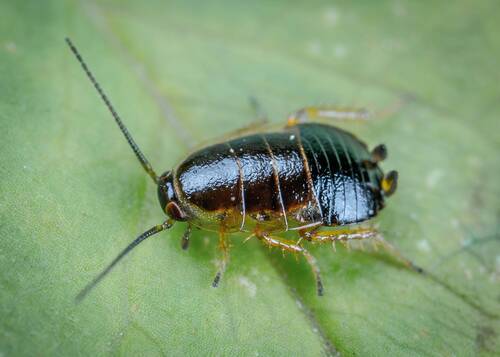Cockroaches are common pests in many people's lives, especially in warm, humid environments where they reproduce rapidly. However, there are many animals in nature that feed on cockroaches, and they play an important role as scavengers in the ecosystem, helping to control the number of cockroaches. This article will detail several common animals that prey on cockroaches and how they play a role in the ecosystem.

Spiders are one of the top predators of cockroaches. Many spider species, especially the larger ones, such as wolf spiders and hunter spiders, can easily prey on larger cockroaches. Spiders usually weave webs to catch passing prey, or take the initiative to attack and paralyze prey with venom.
Natural Pest Control: Spiders, as important predators in the ecosystem, can help control the number of cockroaches in homes and in the wild.
Quick Hunting: Spiders can quickly subdue cockroaches with their flexible legs and powerful venom.
Lizards, especially geckos and chameleons, love to feed on cockroaches. Lizards catch prey by quickly extending their tongues, and their fast hunting skills allow them to easily capture small insects, including cockroaches.
Natural predators in the home: Small lizards such as domestic geckos are often used as "natural weapons" for household pest control, especially in tropical areas.
Diverse diet: Lizards not only eat cockroaches, but also other insects, which helps maintain ecological balance.
Many birds, especially insectivorous birds such as swallows and sparrows, prey on cockroaches. Birds easily catch insects on the ground or in flight, including cockroaches, with their agile flight and sharp beaks.
Farmland pest control: Birds often prey on pests, including cockroaches, around farmland, and are essential for pest management of crops.
Urban ecological regulators: In cities, birds such as sparrows help control the number of pests such as cockroaches.
Amphibians such as frogs and toads also often prey on cockroaches. They use their long, sticky tongues to quickly grab passing cockroaches. These animals usually live in humid environments, which cockroaches also like, making them common prey.
Important members of wetland ecosystems: Frogs and toads help control insect populations, including cockroaches, near wetlands and other bodies of water.
Nocturnal hunters: Many amphibians are nocturnal, overlapping with the active time of cockroaches, making them effective in catching them.
Small mammals such as mice and hedgehogs also prey on cockroaches, especially when food is scarce. They have an appetite for all kinds of insects, and cockroaches are part of their diet.
Opportunistic predator: Rats and hedgehogs usually catch any edible insects, including cockroaches.
Reduce the number of pests: These animals play the role of scavengers in the natural environment, helping to reduce the reproduction and spread of cockroaches.
Praying mantis is a well-known hunting insect that captures prey with its quick reaction and powerful forelimbs. They are able to hunt all kinds of insects, including larger cockroaches.
Precision hunting: Mantises are able to accurately capture cockroaches with their keen vision and strong forelimbs, and are the top predators in the insect world.
Ecological balance: Mantises play a vital role in controlling the number of pests, especially in gardens and fields.
Some species of ants, such as army ants, hunt insects, including cockroaches, in groups. Although it is not easy for a single ant to catch a cockroach, group action enables them to successfully surround and kill cockroaches.
Scavenger: Ants not only prey on live cockroaches, but also decompose cockroach corpses to help clean up the environment.
Group collaboration: Through group hunting, ants can effectively capture prey much larger than themselves, including cockroaches.
In nature, many animals feed on cockroaches, from spiders and lizards to birds, amphibians, mammals and other insects, and these predators together build a complex ecosystem. These animals play a vital role in controlling the number of cockroaches and reducing the trouble of cockroaches in people's living environment.
If you want to reduce the number of cockroaches, try introducing some of these natural predators into your environment, or make sure the ecosystem around you remains healthy and balanced. By understanding the predatory behavior of these animals, we can better understand how nature regulates itself to maintain the health and balance of the ecosystem.
animal tags: cockroach
We created this article in conjunction with AI technology, then made sure it was fact-checked and edited by a Animals Top editor.